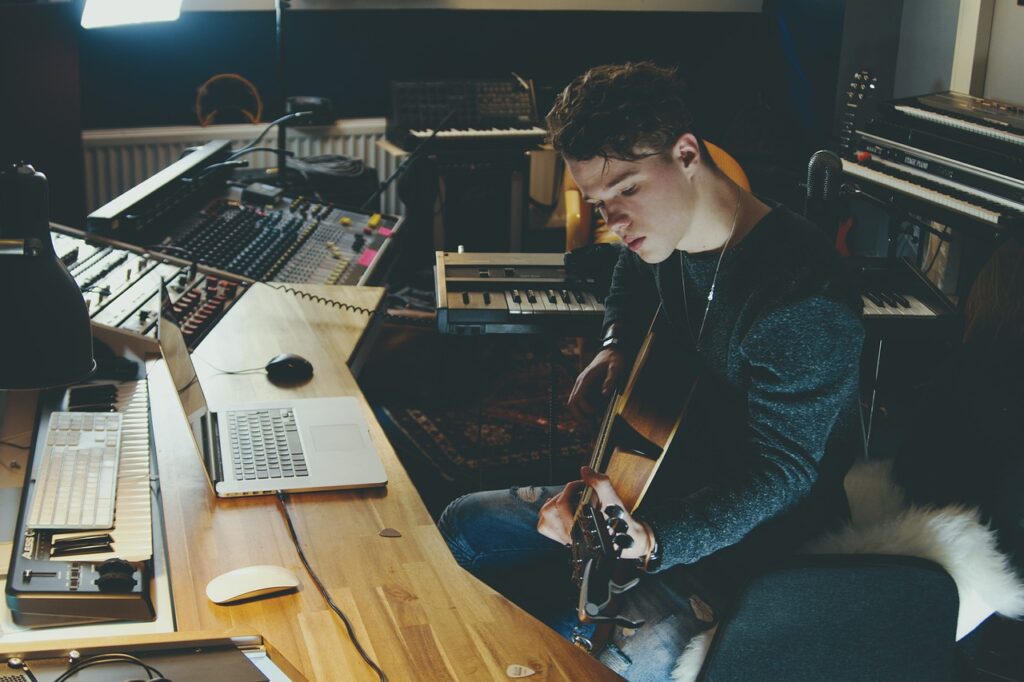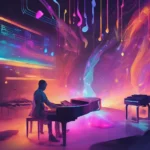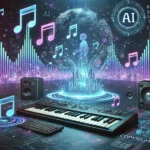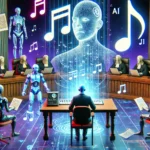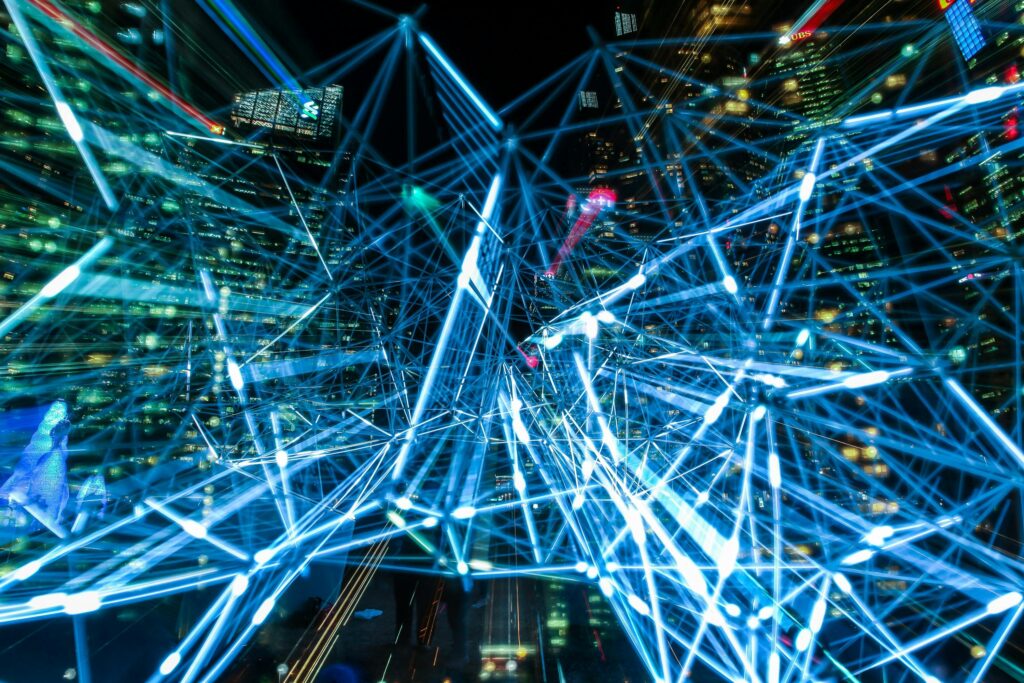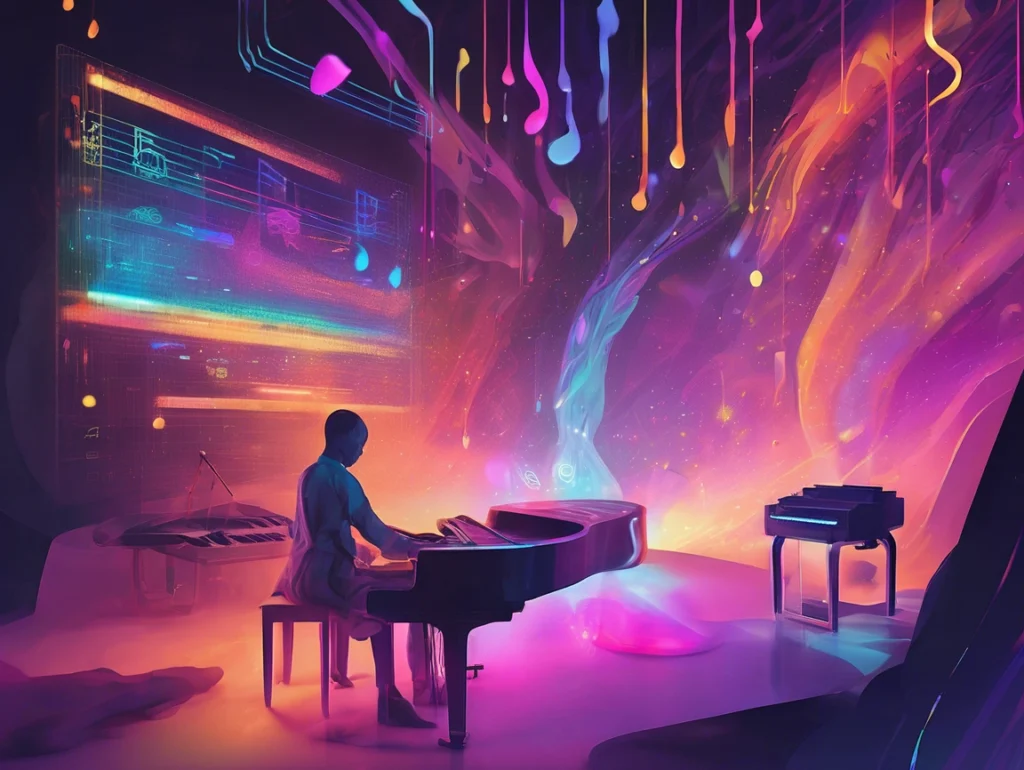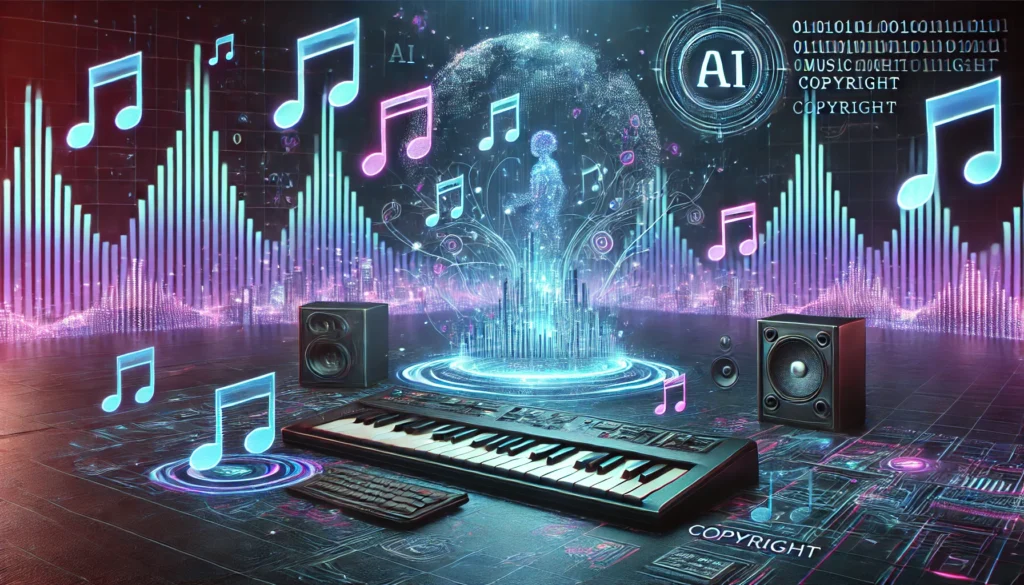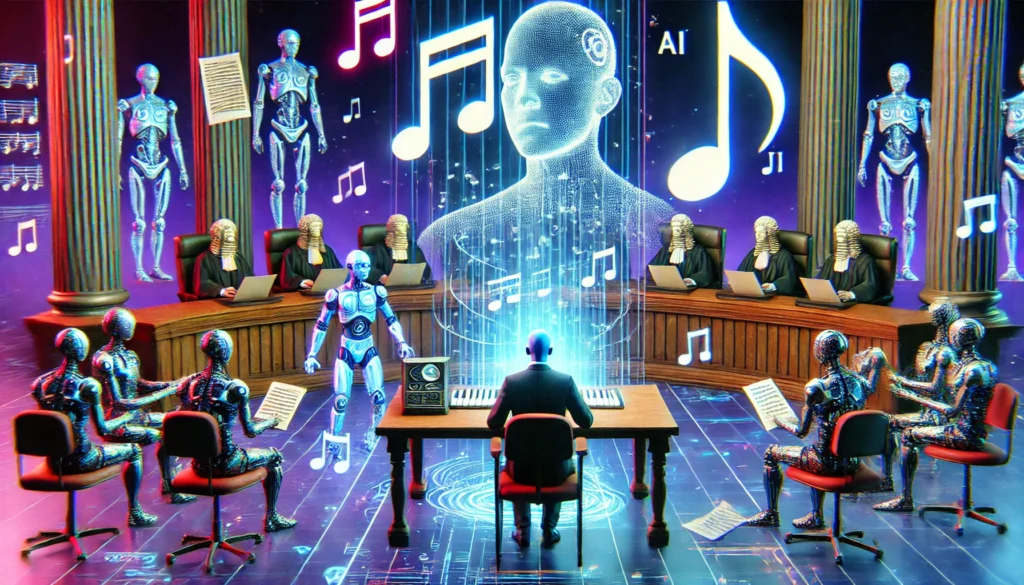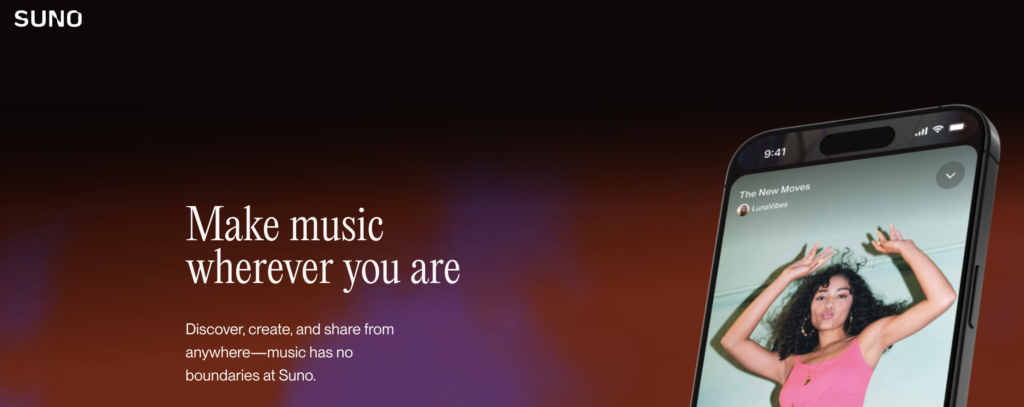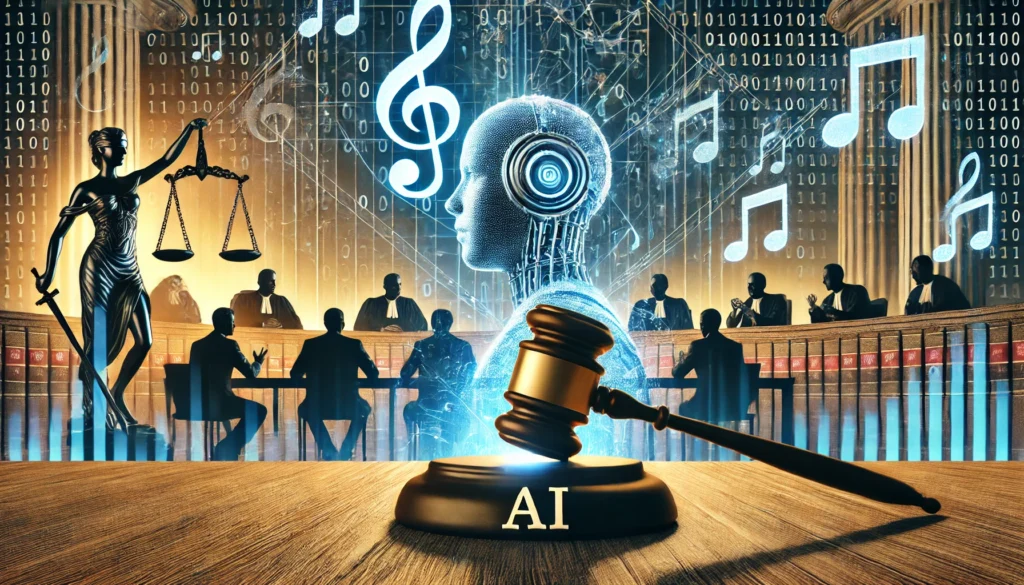Creating the perfect soundtrack can make or break a film’s emotional impact! As a filmmaker or composer, you’ve probably wondered if AI tools could help streamline your workflow without sacrificing quality. I’ve tested dozens of AI music generators, and the technology has evolved dramatically in recent years. Did you know that several award-winning short films have already incorporated AI-assisted music? Let’s explore the best AI tools for film music that are revolutionizing the scoring process while helping creators maintain their unique artistic vision.
Also, do you think AI can compete with human composers? Read my analysis HERE!
What Makes a Great AI Film Music Generator?
Finding the right AI for film music requires understanding what separates professional-grade tools from basic generators. The landscape of neural soundtrack generation has evolved significantly in 2025.
Key Features to Prioritize
The best AI soundtrack creators combine powerful algorithms with intuitive interfaces. Look for tools that offer extensive sound libraries with high-quality samples. These libraries should contain various instruments and playing styles. Temporal control is another crucial feature. Your AI tool should allow precise synchronization with film scenes and transitions.
Human-AI Collaboration Balance
Effective AI film score generators enhance human creativity rather than replace it. The most successful composers use AI as a collaborative partner. This approach preserves the emotional authenticity that audiences connect with. The ideal tools allow you to guide the AI with specific parameters while maintaining creative control over the final product.
Technical Requirements for Professionals
Professional film composers need AI tools that integrate seamlessly with their existing workflows. This means compatibility with industry-standard Digital Audio Workstations (DAWs). The best systems offer high-resolution audio exports (at least 48kHz/24-bit). They should also support various file formats like WAV, AIFF, and MP3. Look for tools that offer stem separation for post-production flexibility.
Workflow Integration
The most valuable AI music tools for movies connect easily with video editing software. This allows for real-time visual feedback during composition. Many top platforms now offer plugins for popular DAWs like Logic Pro, Pro Tools, and Ableton Live. Some even provide frame-accurate SMPTE timecode support for precise synchronization.
Top 10 AI Music Generators for Film Scoring
The market for AI film music production tools has expanded dramatically in 2025. Each platform offers unique advantages for different types of projects and workflows. This list is specified for film scoring, however, I’ve also made a list of great AI generators to try out as well that is not only for film scoring. Check it out:
1. AIVA Pro
AIVA specializes in orchestral and emotional compositions. It excels at creating theme-based scores with consistent motifs. Their latest algorithm generates remarkably cohesive multi-movement pieces. Pricing starts at $19/month with higher tiers for commercial film rights.
2. Soundraw
Soundraw provides an exceptionally intuitive interface ideal for indie filmmakers. Their mood-based composition system produces authentic-sounding results quickly. The platform offers unlimited exports with a $19.99 monthly subscription. All music comes with complete commercial usage rights.
3. Mubert Studio
Mubert stands out for its adaptive music capabilities. It generates continuous soundscapes that respond to scene dynamics. Their technology excels at creating tension and release patterns. The professional plan costs $29/month and includes real-time rendering features.
4. Amper Create
Amper Music delivers professional-grade orchestration with deep customization options. Their advanced algorithm handles complex harmonic progressions convincingly. The platform integrates directly with major video editing software. Enterprise pricing is available for production studios.
5. Ecrett Music
Ecrett Music focuses on scene-specific composition templates. Their emotional mapping technology produces surprisingly nuanced results. The platform offers specialized templates for different film genres. Subscriptions begin at $15/month with volume discounts available.
6. Audoir
Audoir employs advanced neural networks for cinematic sound design. Their hybrid approach combines AI generation with professional samples. The platform excels at creating atmospheric and textural elements. Pricing starts at $24.99/month for commercial licenses.
7. Melodrive
Melodrive specializes in interactive and adaptive soundtracks. Their algorithm responds dynamically to scene changes and energy levels. This makes it particularly valuable for projects with variable pacing. Subscriptions begin at $29/month with higher tiers for multi-user access.
8. Amadeus Code
Amadeus Code leverages a massive database of classical compositions. This approach produces remarkably authentic orchestral arrangements. Their melody-first approach helps maintain thematic consistency. Professional licenses start at $49/month.
9. Musico
Musico offers real-time generative composition capabilities. Their technology excels at creating evolving soundscapes that follow emotional arcs. The platform includes advanced tempo and key mapping features. Enterprise solutions are available for studios.
10. Filmstro
Filmstro provides granular control over momentum, depth, and power parameters. This unique approach allows for precise emotional sculpting. Their timeline integration with Adobe Premiere is particularly seamless. Plans begin at $19.99/month for independent filmmakers.
AIVA: The Professional Composer’s AI Assistant
AIVA has established itself as a leading AI orchestral composition platform for film professionals. Its sophisticated algorithms create emotionally resonant scores with remarkable authenticity.
Composition Engine Excellence
AIVA’s neural network was trained on thousands of classical compositions and film scores. This extensive training creates a deep understanding of musical structure and emotional expression. The system produces coherent musical phrases rather than disconnected segments. Composers can generate complete themes or develop variations on existing motifs.
Emotional Intelligence
What sets AIVA apart is its nuanced handling of emotional cues. The platform offers 15 distinct emotional presets ranging from “triumphant” to “melancholic.” These serve as starting points that composers can refine. The AI adapts these emotional profiles to match specific scene requirements. It understands how to build tension gradually or create sudden emotional shifts.
Orchestration Capabilities
AIVA provides unparalleled control over instrumentation and orchestration. Users can specify instrument families or individual instruments within an arrangement. The system understands proper ranges and playing techniques for each instrument. This prevents unrealistic or unplayable passages. The latest update added specialized articulations for strings and woodwinds.
Professional Workflow Integration
The platform integrates seamlessly with professional composition workflows. AIVA generates MIDI files that can be imported directly into any DAW. This allows composers to apply their own sound libraries and processing. The system also provides MusicXML export for notation programs like Sibelius or Finale. This flexibility makes AIVA valuable for sketching ideas or completing sections of a score.
Soundraw: Intuitive AI Music for Indie Filmmakers
Soundraw has revolutionized AI music generation for independent filmmakers. Its accessibility and quality make it an essential tool for projects with limited budgets.
User-Friendly Design
Soundraw’s interface prioritizes simplicity without sacrificing capability. The platform uses visual mood boards rather than technical music terminology. This approach makes it accessible to filmmakers without formal music training. Users can generate complete compositions in minutes rather than hours.
Template System Excellence
The platform’s template system provides consistent results across different projects. Each template combines specific instrumentation, rhythm patterns, and harmonic structures. These templates serve as reliable starting points for customization. The library includes options for virtually every film genre and mood.
Genre Versatility
Soundraw excels at producing authentic-sounding music across diverse genres. The system handles everything from orchestral scores to electronic soundscapes. Recent additions include specialized templates for horror, romance, and documentary films. Each genre template incorporates appropriate instrumentation and production techniques.
Export and Integration
The platform provides flexible export options for different workflows. Users can download high-quality WAV files with separated stems. This allows for precise mixing and placement within a film’s soundscape. Soundraw also offers direct timeline integration with major video editing software. Recent updates added frame-accurate synchronization capabilities.
Mubert: AI-Powered Adaptive Music for Dynamic Scenes
Mubert has pioneered adaptive AI music generation for film productions. Its technology creates soundtracks that evolve naturally with the visual narrative.
Real-Time Adaptation
Mubert’s core technology generates continuous music that responds to scene changes. The system analyzes visual elements like movement, color, and pacing. It then adjusts musical parameters to match these visual cues. This creates a soundtrack that feels organically connected to the imagery.
Genre Diversity
The platform supports an impressive range of musical styles and genres. Each genre model was trained on thousands of professional compositions. This creates authentic-sounding results rather than generic approximations. Recent updates added specialized modes for documentary and animation projects.
Synchronization Technology
Mubert’s synchronization capabilities set it apart from competitors. The system identifies key moments in a scene and places musical events accordingly. This creates natural-feeling hit points without obvious quantization. The technology handles gradual transitions particularly well.
Collaborative Workflow
The platform supports collaborative creation between directors and composers. Directors can provide high-level guidance about emotional tone and intensity. Composers can then refine these parameters and add personal touches. This balance respects both creative visions while leveraging AI efficiency.
Amper Music: Professional-Grade AI Composition
Amper Music delivers professional-quality AI composition tools for serious film composers. Its depth and flexibility make it suitable for high-end productions.
Advanced Orchestration
Amper’s orchestration engine produces remarkably realistic ensemble arrangements. The system understands proper voicing, ranges, and playing techniques. It avoids common AI pitfalls like unrealistic instrument combinations. The latest version added specialized articulations for expressive string writing.
Customization Depth
The platform provides granular control over virtually every musical parameter. Users can specify harmonic progressions, rhythmic patterns, and textural densities. The system maintains musical coherence even with extensive customization. This allows composers to shape the AI output to match their personal style.
Professional Integration
Amper integrates seamlessly with professional post-production workflows. The system generates multitrack stems with industry-standard specifications. These stems can be imported directly into mixing sessions. Recent updates added support for surround sound and immersive audio formats.
Commercial Applications
The platform includes comprehensive rights management for commercial projects. Users receive complete ownership of generated compositions. The licensing structure supports everything from independent shorts to major studio productions. This clarity makes Amper particularly valuable for professional contexts.
Ecrett Music: Scene-Based AI Composition
Ecrett Music has developed specialized AI technology for scene-specific composition. This approach creates particularly effective narrative enhancement.
Scene Templates
Ecrett’s template library organizes compositions by scene type rather than genre. Options include “chase scene,” “emotional revelation,” and “establishing shot.” Each template incorporates appropriate pacing, intensity curves, and instrumentation. This scene-focused approach produces results that feel cinematically appropriate.
Emotional Accuracy
The platform excels at matching musical tone to narrative emotional content. Its algorithm identifies subtle emotional gradations beyond basic “happy” or “sad” designations. This creates scores that enhance rather than overstate a scene’s emotional content. The system handles complex or ambiguous emotions particularly well.
Customization Options
Ecrett provides intuitive customization tools for non-musicians. Users can adjust parameters like “intensity,” “complexity,” and “brightness.” These high-level controls affect multiple musical elements simultaneously. This approach makes refinement accessible without requiring technical knowledge.
Technical Integration
The platform supports modern post-production technical requirements. Export options include high-resolution audio and separated stems. The system can generate music to precise timing specifications. Recent updates added integration with major editing platforms like Adobe Premiere and Final Cut Pro.
Specialized Film Scoring Features in Leading AI Tools
Today’s AI music generators include sophisticated features specifically designed for film scoring applications. These capabilities address the unique challenges of cinematic composition.
Tempo Mapping and Hit Points
Modern AI systems offer precise tempo mapping to match musical events with visual cues. These tools identify important moments in a scene and place musical accents accordingly. Advanced algorithms create natural-feeling transitions between different tempos. This creates scores that feel custom-composed for specific scenes.
Thematic Development
Leading platforms now support leitmotif development and variation. These systems can generate multiple versions of a character’s theme. Variations might include different instrumentation, tempo, or emotional qualities. This approach creates thematic consistency while avoiding repetitiveness.
Dynamic Range Control
AI film scoring tools now include specialized features for dialogue compatibility. These systems automatically adjust dynamic range to preserve dialogue clarity. Some platforms offer “dialogue detection” that reduces musical complexity during conversations. This creates scores that support rather than compete with the storytelling.
Emotional Progression
Advanced AI composers can now develop emotional arcs across an entire film. These systems track narrative progression and adjust musical parameters accordingly. This creates cohesive scores that enhance the overall storytelling. The technology handles gradual emotional shifts particularly well.
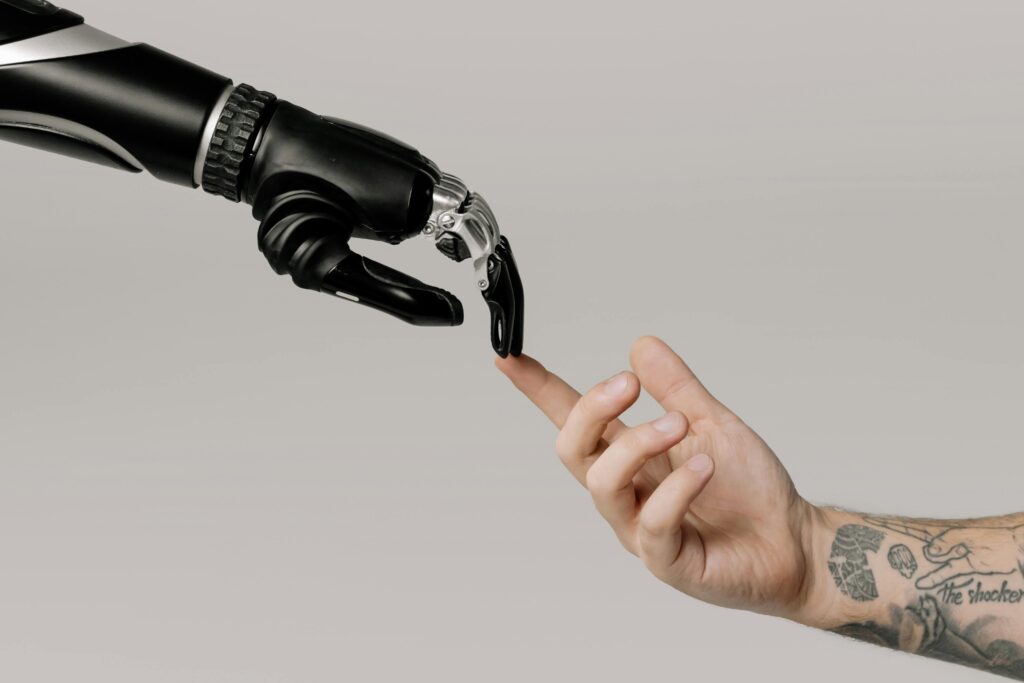
How to Integrate AI Music Generators into Your Film Scoring Workflow
Incorporating AI tools into traditional film scoring processes requires thoughtful integration. The most successful approach treats AI as a collaborative partner rather than a replacement.
Step-by-Step Integration
Start by using AI to generate initial concepts or sketches. These computer-generated ideas can spark creativity and overcome writer’s block. Next, refine these sketches manually to add personal touches and nuance. Finally, produce the final score using your preferred instruments and production techniques. This hybrid workflow combines AI efficiency with human artistry.
Balancing AI and Human Input
The most effective approach uses AI for technical challenges while preserving human creative direction. Let AI handle repetitive tasks like orchestration or arrangement variations. Reserve key creative decisions about emotional tone and thematic development for human input. This balance preserves the unique artistic perspective that audiences connect with.
Post-Processing Techniques
Apply professional mixing and production techniques to AI-generated compositions. Subtle processing can add warmth and depth to synthetic orchestrations. Consider replacing key melodic lines with live-performed alternatives. Layer additional sound design elements to create texture and complexity. These refinements help transform AI output into professional-quality scores.
Practical Collaboration Strategies
Establish clear communication between directors, composers, and AI tools. Directors should provide specific emotional guidance rather than technical instructions. Composers translate these emotional requirements into appropriate AI parameters. Regular review sessions ensure the developing score matches the film’s vision. This collaborative approach yields the most satisfying results.
Ethical and Legal Considerations for AI Music in Film
As AI music generation becomes more prevalent in filmmaking, important ethical and legal questions have emerged. Understanding these considerations is essential for professional productions.
Copyright Implications
The copyright status of AI-generated music continues to evolve in 2025. Most platforms now assign full rights to the user who generated the composition. However, some jurisdictions still have ambiguous regulations regarding AI-created content. The safest approach is working with platforms that provide clear rights assignment and documentation.
Proper Attribution
Industry best practices now include acknowledging both human composers and AI tools. Standard credits might read “Music by [Composer Name] assisted by [AI Platform].” This transparency honors the collaborative nature of modern composition. It also helps establish precedent for future attribution standards.
Licensing Models
Different AI platforms offer varying licensing structures for generated content. Some provide royalty-free commercial usage with a subscription. Others charge additional fees based on project type or audience size. Review licensing terms carefully before incorporating AI music into commercial productions. Some platforms offer specialized options for festival submissions versus wide release.
Industry Reception
The film industry’s acceptance of AI-composed music has increased significantly. Several major film festivals now include categories specifically for AI-assisted scores. However, some traditional competitions still require disclosure of AI involvement. Understanding these expectations helps avoid potential controversies or disqualifications.
Conclusion
The landscape of AI music generation for film scoring continues to evolve rapidly, offering filmmakers and composers powerful new tools to enhance their creative process. Whether you’re an indie filmmaker looking for affordable scoring solutions or a professional composer seeking to streamline your workflow, today’s AI music generators offer impressive capabilities that can help bring your cinematic vision to life.
The most successful approach treats these tools as collaborative partners rather than replacements for human creativity. By combining AI efficiency with human artistic direction, composers can create emotionally resonant scores more quickly and affordably than ever before.
As you explore these options, consider how each platform might integrate with your unique workflow and artistic goals. Experiment with different tools to find the combination that best supports your creative vision. Remember that these systems continue to improve rapidly, with new capabilities emerging regularly.
The future of film music is an exciting blend of human artistry and AI assistance. This partnership offers unprecedented creative possibilities for filmmakers at every level. By embracing these tools thoughtfully, you can create memorable scores that enhance your storytelling and connect deeply with audiences.

